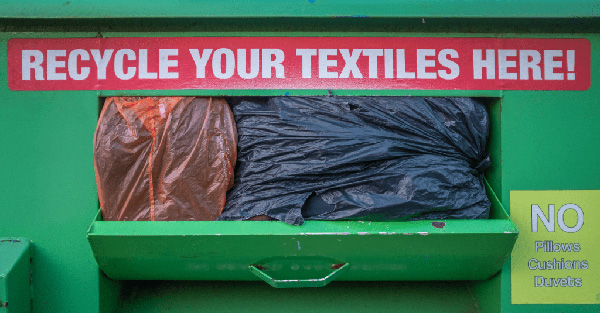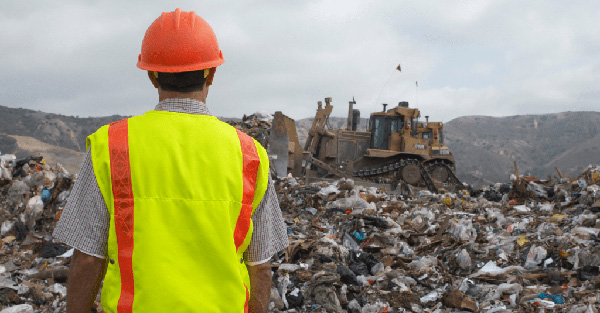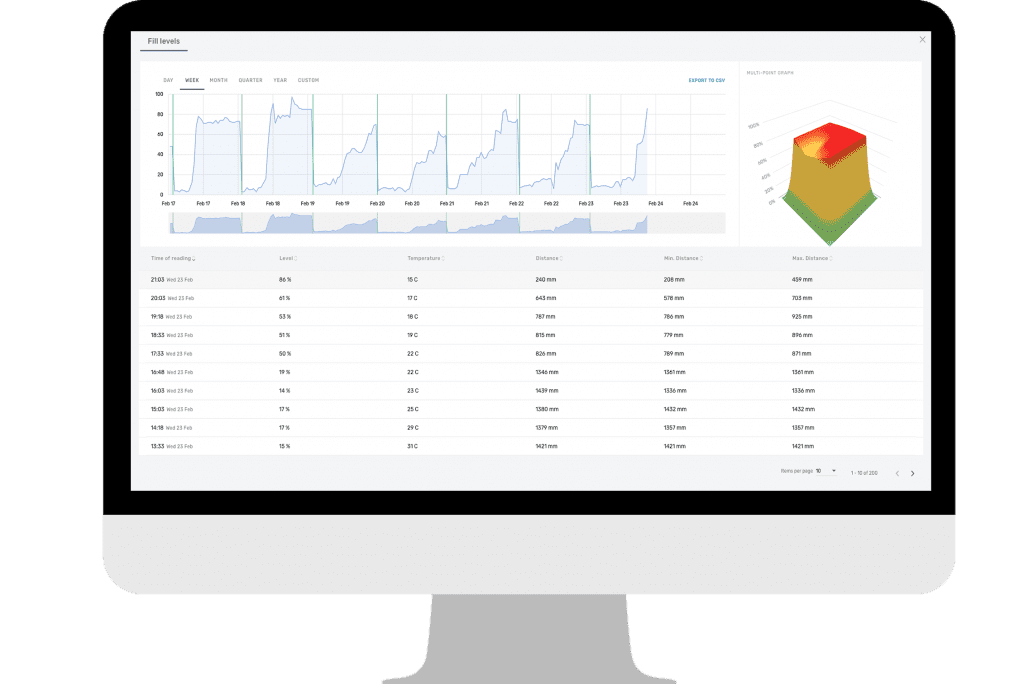There’s more to sustainable waste management than recycling. It’s about focusing on the entire life cycle of products: minimizing the amount of waste and keeping as many materials as possible in the resource loop. Ultimately, sustainable waste management aims to reduce the negative impacts of our modern consumption. And it’s part of the UN’s 17 Sustainable Development Goals.
In recent years, efforts to shift from a linear to a circular economy have become an integrated aspect of our waste services. A circular economy is a system without waste (or with very minimal waste). In other words, waste becomes a resource – just like it does in nature. And this circularity is essential for building future-proof waste services.
In this article, we’ll dive into the realm of sustainable waste, including the waste hierarchy and different ways you can transition to greener waste management.
Sustainable Waste Management and the Hierarchy
The waste hierarchy ranks waste management strategies and options according to what is best for the environment. The system prioritizes ways to use resources efficiently. It emphasizes the least wasteful practices at the top of the pyramid, while the last resort options of disposal and treatment are listed at the bottom.

Prevention
Rethinking and redesigning products is top of the waste hierarchy. We can prevent waste from occurring at the source by using fewer materials in the design and manufacturing process. It’s also important to use products for longer and use less hazardous materials.
For example, cutting out single-use products and minimizing packaging are key steps to preventing and reducing waste.
Reuse
This involves checking, cleaning, repairing, and/or refurbishing entire items or spare parts.
This also includes education about how to reuse waste products. Reusing is preferred to recycling or other options lower down the hierarchy because it doesn’t involve processing new materials or using new resources.
Reusing waste products can be as simple as having shoes repaired, donating clothes to charity, or getting creative with food leftovers.

Recycling
Recycling takes waste materials out of the cycle. It turns them into useable materials so we can create new products. Recycling requires energy, money, and resources. But it does negate some of the adverse impacts of waste disposal because it keeps materials in the loop.
As the Israeli Ministry of Environmental Protection explains, the process consists of many stages, including:
- Separation
- Collection
- Sorting at a treatment facility
- Producing recycled raw materials at a factory
- Using the materials to create new products
Recovery
This stage involves converting waste into energy, such as fuel, electricity, and heat. There are a range of different types of energy recovery, including:
- Combustion (incineration)
- Gasification (a process that converts biowaste into fuel gas)
- Anaerobic digestion (the bacterial breakdown of organic matter that generates biogas)
- Landfill gas recovery (the process of collecting methane gas from solid waste in landfill sites)
Combustion
Also known as “confined and controlled burning”, combustion recovers energy from the waste burning process and generates a renewable energy source. It also helps reduce carbon emissions, as it decreases the amount of waste going to landfill. This offsets the need for energy from fossil fuels.
Mass burn or incineration is an example of combustion technology. Here, waste is burned at very high temperatures in special facilities. This creates energy for electricity and heating, as well as for the process itself. According to the United States Environmental Protection Agency, the country currently has 75 combustion facilities, located in 25 states. While in Denmark, bioenergy is “the most widely used renewable energy source.”
Disposal
The final step of the waste hierarchy is disposal. This means sending waste to landfill or incineration without energy recovery. This is inevitable for some waste. But we can take steps to avoid it by implementing more sustainable waste practices and methods.

Making Your Waste Management More Sustainable
Data-driven solutions are the key to sustainability. Why? Because it provides deep insights and an objective foundation for all of your operational decisions. After all, you can only manage what you can measure.
What is a Data-Driven Waste Management Solution?
A smart waste management solution uses smart sensors and data to optimize the way you deal with waste. Smart sensors monitor the fill levels of bins and provide you with digital updates on waste generation behavior.
This empowers you to only service bins when they are full, instead of wasting resources on empty collection services or using more resources taking care of overflowing bins. All of the data collected enables you to improve operations. So, you will not only become more efficient and transparent, but also more sustainable.

The Nordsense Smart Waste Management Platform provides real-time data on waste generation patterns.
Carbon-Efficient Waste, Recycling, and Reuse Collections
A data-driven waste management system provides you with full transparency of your collections, vehicle usage, and fuel consumption. Studies show that many collection services occur too early when bins are close to empty. This is because many waste collectors still employ a traditional approach to waste services. They operate on a fixed schedule where all bins are serviced on specific days and at specific times – regardless of how full they are. This means that often, vehicles are driving around unnecessarily and essentially emptying air.
Switching to event-driven waste services based on data can completely change this. It means that waste collectors can prioritize their collections and skip the empty bins. This can result in significant savings in terms of driving distance, fuel, and carbon emissions – all contributing to more carbon-efficient waste, recycling, and reuse collections. And you’ll be able to see your saved mileage and carbon emissions in your dashboard.
Increasing Recycling Rates
Getting people involving in recycling is no easy feat. The key is to make sorting trash convenient. And data can be a very useful tool for this. A data-driven waste solution enables you to measure and understand recycling behavior. You can use the data to gain an overview of how people are using their recycling bins. And you can utilize the information to improve bin capacities, locations, and service times. All in an effort to make recycling easier for the end-user. Afterall, the more bins in easy and convenient locations, the more people will recycle.

Read More About How Data Can Improve Recycling Programs
Get Started with Sustainable Waste Management
More sustainable waste management starts with data. These digital insights can accelerate your journey towards more environmentally friendly waste services, keeping them at the top of the waste hierarchy. It empowers you to not only measure your operations, but also manage your efficiency and sustainability.
Learn More About Data-Driven and Sustainable Waste Solutions
